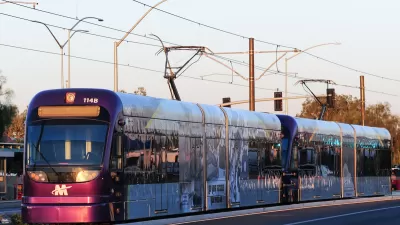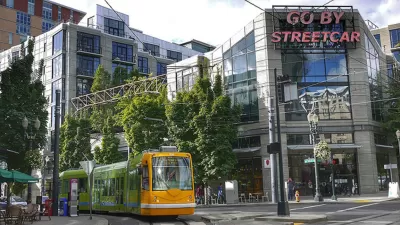Just days after the state approved a significant increase on its gas tax, and the state legislature is focusing much more on road projects than public transit.

The Ohio State Legislature recently approved an increased tax on fuel sales, as detailed by Planetizen Correspondent Irvin Dawid, in an effort to generate funding for transportation infrastructure projects.
A recent spate of news coverage focuses on the new era of transportation funding in the state, already identifying the potential for concern that the state is repeating old patterns that got it into the funding mess to begin with. Big questions about how effective the new fuel tax will be in fixing the state's infrastructure deficit loom over the entire discussion.
An article by Pat LeFleur, for instance, focuses on the additional $70 million for public transit around the state, which would double the state's current investment. "The increased funding wouldn't come directly from the gas tax — that's reserved for road and bridge projects exclusively — but it's a move intended to boost what has been a meager investment from Columbus into the state's 61 transit authorities," writes LaFleur.
Writing from Cincinnati, LaFleur notes that the extra $70 million won't cover Cincinnati's transit funding needs, much less the rest of the state. Despite the addition of a new statewide fuel tax, the Southwest Ohio Regional Transit Authority is still searching for funding solutions.
Hannah Sperling also reports from Cincinnati on funding included in the state's new transportation budget to study the Eastern Bypass, "a proposed outer loop around the current outer loop that could potentially help ease congestion and spur new development farther away from the city's core."
"Depending on whom you ask, this is either a great idea or just one more example of wasting money on a pet project," according to Sperling. "The Eastern Bypass is a proposed four-lane highway that would go roughly 70 miles, connecting at Interstate 75 in Springboro and eventually reconnecting to I-75 at Crittendon in Grant County."
FULL STORY: Ohio is ready to double public transit investment, but is it enough for struggling Cincinnati Metro?

Study: Maui’s Plan to Convert Vacation Rentals to Long-Term Housing Could Cause Nearly $1 Billion Economic Loss
The plan would reduce visitor accommodation by 25,% resulting in 1,900 jobs lost.

North Texas Transit Leaders Tout Benefits of TOD for Growing Region
At a summit focused on transit-oriented development, policymakers discussed how North Texas’ expanded light rail system can serve as a tool for economic growth.

Why Should We Subsidize Public Transportation?
Many public transit agencies face financial stress due to rising costs, declining fare revenue, and declining subsidies. Transit advocates must provide a strong business case for increasing public transit funding.

How to Make US Trains Faster
Changes to boarding platforms and a switch to electric trains could improve U.S. passenger rail service without the added cost of high-speed rail.

Columbia’s Revitalized ‘Loop’ Is a Hub for Local Entrepreneurs
A focus on small businesses is helping a commercial corridor in Columbia, Missouri thrive.

Invasive Insect Threatens Minnesota’s Ash Forests
The Emerald Ash Borer is a rapidly spreading invasive pest threatening Minnesota’s ash trees, and homeowners are encouraged to plant diverse replacement species, avoid moving ash firewood, and monitor for signs of infestation.
Urban Design for Planners 1: Software Tools
This six-course series explores essential urban design concepts using open source software and equips planners with the tools they need to participate fully in the urban design process.
Planning for Universal Design
Learn the tools for implementing Universal Design in planning regulations.
Ascent Environmental
Borough of Carlisle
Institute for Housing and Urban Development Studies (IHS)
City of Grandview
Harvard GSD Executive Education
Toledo-Lucas County Plan Commissions
Salt Lake City
NYU Wagner Graduate School of Public Service





























